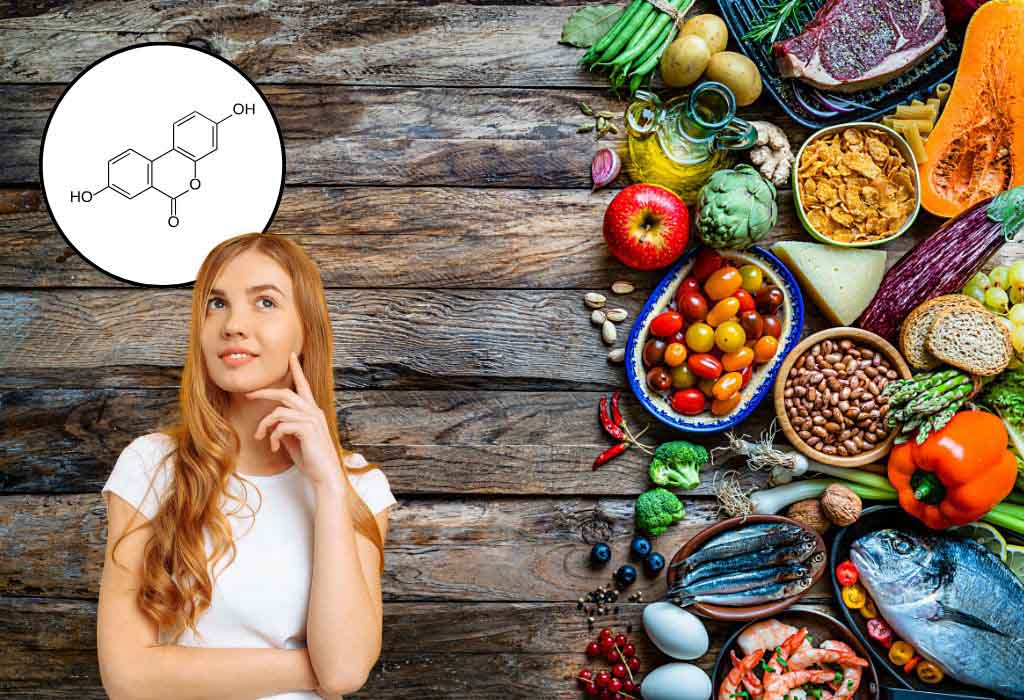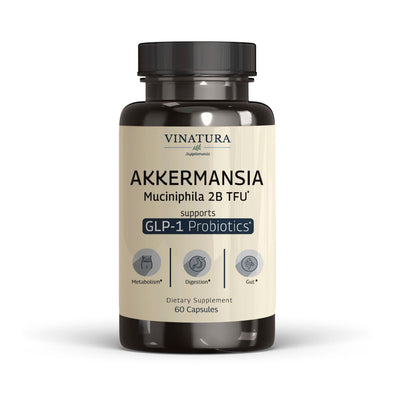
Top 8 Foods Rich in Urolithin A: Eat for More Longevity
Before exploring further, please read the disclaimer located at the end of this webpage.
Key Takeaways
Before we dive into the details of the top 8 foods rich in Urolithin A precursors, we’ve compiled a list of promising dietary sources that support its natural production.
- Jaboticaba (Brazilian grape tree), 900mg/100g
- Pomegranates, 250–900mg/100g
- Walnuts (Juglans regia), 864mg/100g
- Raspberries, 326mg/100g
- Pecan nuts, 316mg/100g
- Cloudberries (Nordic berries), 312mg/100g
- Dewberries (Rubus caesius), ~290mg/100g
- Blackberries, 150–270mg/100g
- Boysenberries, ~240mg/100g
- Oak acorns, ~200mg/100g
- Chestnuts, 150mg/100g
- Hazelnuts, 110mg/100g
- Grapes, 3–91mg/100g
- Red currants, 85mg/100g
- Strawberries, 71–83mg/100g
- Guava, 63mg/100g
- Almonds, 54.7mg/100g
- Brazilian cherries (Eugenia brasiliensis), 16mg/100g
Background on Urolithin A
Fundamentally, Urolithin A is a metabolite produced when the body digests certain compounds—primarily ellagitannins and ellagic acid—found in foods like pomegranates, various berries, and some nuts.
This metabolic conversion relies on specific strains of beneficial gut bacteria. Consequently, not everyone can efficiently produce Urolithin A due to individual differences in microbiome composition.
Delving deeper into Urolithin A (UA), this compound has been shown to enhance mitochondrial function—mitochondria being the powerhouse of the cell.
According to a 2016 study, Urolithin A was found to activate mitophagy—the selective autophagic removal of damaged mitochondria—thereby boosting cellular energy efficiency and potentially slowing the aging process (Ryu et al., 2016) [1].
Another study published in 2022 found that daily supplementation of 500mg of Urolithin A over four months led to a 12% increase in muscle strength among sedentary middle-aged adults. UA also improved VO₂ max, endurance, and lowered inflammation markers such as CRP (Singh et al., 2022) [2].
With growing evidence from human trials, the list of Urolithin A benefits continues to expand—especially in the areas of anti-aging, energy metabolism, and overall cellular function.
Related article: 5 Best Urolithin A Supplements for Healthy Aging and Muscle Health
The Top 8 Foods Rich in Urolithin A

Below is a curated list of the top 8 foods that support Urolithin A production—widely available and suitable for most diets.
Pomegranates

Beyond being rich in precursors, pomegranates also contain significant levels of vitamin C, vitamin K, and potent antioxidants such as anthocyanins and flavonoids, contributing to a variety of health benefits:
Cardiovascular support and blood pressure reduction:
Pomegranate extract contains punicalagin—a highly bioactive polyphenol—shown to improve endothelial function and reduce blood pressure.
In a 2004 animal study by Aviram et al., one year of pomegranate juice consumption reduced carotid artery thickness by 30% and lowered systolic blood pressure by an average of 12% (Aviram et al., 2004) [3].
Potent antioxidant activity, free radical neutralization:
Punicalagin and ellagic acid in pomegranate extract are powerful antioxidants capable of neutralizing free radicals and inhibiting lipid peroxidation.
One study revealed that pomegranate juice has three times the antioxidant activity of green tea and red wine. This contributes to slower cellular aging and protection of the cardiovascular and nervous systems from oxidative stress damage (Gil et al., 2000) [4].
Read more: Urolithin A vs Pomegranate Extract – What’s the Difference?
Berries (e.g., strawberries, raspberries)

Beyond being excellent ingredients for baked goods and jams, these berries are also packed with vitamins, fiber, and anthocyanins—offering powerful antioxidant properties and cardiovascular support.
Walnuts

In addition, walnuts are recognized for a wide range of health benefits, high nutritional density, and healthy fats—making them a staple in various well-balanced diets.
Almonds

Notably, almonds are also rich in protein, unsaturated fats, and vitamin E—supporting antioxidant defenses and protecting mitochondria from free radical damage.
Black Raspberries

Additionally, black raspberries are believed to support digestive health thanks to their potent anti-inflammatory properties.
In vitro cell culture research found that black raspberry extract inhibited the growth of certain colon cells in a dose-dependent manner, with 49.2 µg/mL of total anthocyanins reducing cell proliferation by up to 66% after 72 hours (Dai et al., 2007) [8].
Green Tea

This has been demonstrated in a preclinical mouse study, which monitored the growth of probiotic and prebiotic strains and their polyphenol absorption capacity. Results showed that green tea consumption enhanced both (Rodríguez-Daza et al., 2021) [9].
Grapes

Grapes are also known for their cardiovascular benefits, blood sugar regulation, and circulatory support. The polyphenols in grapes—including resveratrol, quercetin, and anthocyanins—have been shown to dilate blood vessels, lower blood pressure, and improve endothelial function, which plays a vital role in maintaining arterial health.
A study published in Circulation (2001) found that resveratrol inhibited LDL cholesterol oxidation and reduced platelet aggregation - studied for cardiovascular biomarkers (Hung et al., 2001) [11].
Dark Chocolate

Moreover, cacao is widely recognized as a superfood with a broad range of health benefits—enhancing cognition, mood, and blood pressure control. Though it does not directly supply ellagic acid, it remains an indirect but potent food for boosting natural Urolithin A production in the body.
Does the Human Body Always Produce Urolithin A Naturally?
The answer is no. There are two critical factors for the body to consistently produce Urolithin A: (1) consuming a sufficient amount of foods rich in Urolithin A precursors, and (2) having a robust and capable gut microbiome that can effectively metabolize Urolithin A.
According to a study published in Scientific Reports in 2017, only about 30–40% of the population has a gut microbiome capable of efficiently converting ellagitannins into Urolithin A. This capacity depends on various factors, including gut bacterial strains, long-term diet, age, and overall gut health [13].
Therefore, even if you consume plenty of precursor-rich foods, your body may not necessarily produce the required amount of Urolithin A.
Other Ways to Supplement Urolithin A
One of the key methods is through dietary supplements.
Given that even with adequate intake of precursor-rich foods, the body may still fail to efficiently produce Urolithin A, alternative supplementation strategies have emerged as potentially optimal solutions. Notable approaches to improve Urolithin A production include:
1. Consuming Fermented Foods Rich in Polyphenols
Fermented foods such as kefir, miso, kombucha, and yogurt can enhance the diversity of the gut microbiome—a critical factor in converting ellagitannins into Urolithin A. When combined with polyphenol-rich foods, these fermented items may create a synergistic effect that naturally increases Urolithin A bioavailability.
2. Increasing Prebiotic and Probiotic Intake
Prebiotics (such as inulin and resistant starch) and probiotics (beneficial bacterial strains) play a role in strengthening the gut microbiome. As the microbiota becomes more diverse and effective, the body’s ability to produce Urolithin A from ellagitannin-rich foods is also enhanced.
Furthermore, studies have demonstrated a direct correlation between probiotic intake and the efficiency of Urolithin A synthesis in adults (Tomás-Barberán et al., 2014) [14].
3. Using Urolithin A Supplements
In addition to dietary strategies, taking purified Urolithin A supplements has emerged as a promising solution, particularly for individuals with underperforming gut microbiota. Key advantages of this method include:
- Accurate dosage control (typically between 250–500 mg/day)
- Independence from microbiome conversion ability
- Rapid absorption and noticeable efficacy
However, this method also comes with a few drawbacks:
- Potentially higher cost compared to natural food sources
- Possibility of mild gastrointestinal discomfort at high doses
- Necessity to select high-quality, reputable, and pure products
After using a Urolithin A supplement for some time, one user, Lizbet, left the following review on Amazon:
“I’ve been taking this Urolithin A supplement for a while now, and I can honestly say I feel a difference in my energy levels and overall well-being!”*
Frequently Asked Questions
1. What Are the Best Dietary Sources of Urolithin A for Improving Muscle Health and Longevity?
Among the list of foods rich in Urolithin A precursors, pomegranates and berries—such as raspberries and mulberries—as well as nuts like walnuts and pecans, are considered optimal. Notably, pomegranates stand out due to their rich and diverse ellagitannin content.
For individuals seeking to enhance muscle strength and longevity, incorporating these foods into their daily diet is highly recommended, especially when combined with consistent physical activity—preferably endurance-focused exercises such as High-Intensity Interval Training (HIIT). However, it's crucial to understand that not everyone possesses a gut microbiota capable of efficiently converting these precursors into Urolithin A, which means the bioavailability of UA can vary significantly across individuals.
2. How Does Urolithin A Impact Mitochondrial Function and Energy Production in Cells?
Urolithin A triggers the process of mitophagy, which is the targeted elimination of dysfunctional mitochondria. This allows the regeneration of healthier mitochondria, thereby enhancing ATP production—the primary energy currency of cells.
A study by Ryu et al. (2016) demonstrated that: “Urolithin A significantly increased mitochondrial density and efficiency in skeletal muscle cells in mouse and nematode models, and extended their lifespan. In an aging mouse model, after just 8 weeks of Urolithin A supplementation, walking performance and physical endurance were significantly improved compared to the control group—suggesting great potential for applications in assisting the elderly or highly active individuals.”
3. Are Pomegranates and Berries Enough to Boost Urolithin A Levels, or Should Supplements Be Considered?
There’s no one-size-fits-all answer here. The conversion of dietary ellagitannins into Urolithin A is highly dependent on an individual’s gut microbiota composition. Many people lack the necessary microbial species—such as Gordonibacter urolithinfaciens or Ellagibacter isourolithinifaciens—required for this transformation.
As a result, even with high intake of pomegranates or berries, some individuals may not produce sufficient levels of Urolithin A. In such cases, supplementation with purified Urolithin A becomes a compelling alternative worth considering.
4. Can Urolithin A Really Extend Lifespan and Improve Overall Healthspan?
Studies suggest that Urolithin A has notable potential in enhancing healthspan—the duration of life spent in good health, rather than merely increasing chronological lifespan. In Caenorhabditis elegans (C. elegans) models, Urolithin A extended lifespan by up to 45% through its effects on mitochondrial quality control and the clearance of senescent cell structures (Ryu et al., 2016).
In humans, a Phase 1 clinical trial confirmed Urolithin A’s safety, its bioavailability in plasma, and its ability to elevate mitochondrial-related epigenetic markers—suggesting potential for addressing age-related cellular decline. While more long-term studies are needed, current biomarkers point toward a promising impact on human longevity (Andreux et al., 2019).
5. What Role Does Gut Microbiota Play in Converting Food Precursors into Urolithin A?
The gut microbiome is a critical determinant in the body’s ability to produce Urolithin A from dietary sources. This conversion relies on specific bacterial strains, including Gordonibacter spp. and Bifidobacterium pseudocatenulatum.
However, the composition of gut microbiota varies widely across individuals and is influenced by factors such as age, diet, lifestyle, antibiotic use, and underlying health conditions. This explains why two individuals with identical diets may produce vastly different amounts of Urolithin A. Consequently, a strategic intake of prebiotics and probiotics can serve as an effective intervention to enhance endogenous Urolithin A production.
6. Are There Any Notable Side Effects from Taking Urolithin A Supplements Compared to Consuming It Through Diet?
As of current clinical data, Urolithin A supplements have demonstrated a strong safety profile. In a human trial involving healthy adults, no serious adverse effects were observed even at doses as high as 1000 mg/day for 28 consecutive days (Andreux et al., 2019).
That said, compared to natural dietary sources, supplements may lack synergistic co-compounds like vitamin C, flavonoids, and anthocyanins, which potentially enhance the overall bioactivity of ellagitannins. Therefore, the optimal approach would be to combine both methods: maintain a polyphenol-rich diet and consider Urolithin A supplementation when the goal is to support physical performance, muscle endurance, or elderly health.
Conclusion
In conclusion, Urolithin A is a biologically active compound with significant potential to enhance human health. Specifically, it supports cellular energy, slows aging, and improves muscle function. However, its production in the body heavily depends on both dietary intake and gut microbiota composition.
Therefore, increasing the consumption of foods rich in ellagitannins and polyphenols—especially pomegranates, berries, walnuts, and green tea—is crucial. Additionally, supplementing with high-quality Urolithin A products can serve as a powerful adjunctive strategy for those with limited natural production capacity.
References
- [1] [15] [16] Ryu, Dongryeol, et al. “Urolithin A Induces Mitophagy and Prolongs Lifespan in C. Elegans and Increases Muscle Function in Rodents.” Nature Medicine, vol. 22, no. 8, Nature Portfolio, July 2016, pp. 879–88, https://doi.org/10.1038/nm.4132.
- [2] Singh, Anurag, et al. “Urolithin A Improves Muscle Strength, Exercise Performance, and Biomarkers of Mitochondrial Health in a Randomized Trial in Middle-Aged Adults.” Cell Reports Medicine, vol. 3, no. 5, Elsevier BV, May 2022, pp. 100633–33, https://doi.org/10.1016/j.xcrm.2022.100633
- [3] Aviram, Michael, and Mira Rosenblat. “Pomegranate Protection against Cardiovascular Diseases.” Evidence-Based Complementary and Alternative Medicine, vol. 2012, Hindawi Limited, 2012, pp. 1–20, https://doi.org/10.1155/2012/382763.
- [4] Gil, María I., et al. “Antioxidant Activity of Pomegranate Juice and Its Relationship with Phenolic Composition and Processing.” Journal of Agricultural and Food Chemistry, vol. 48, no. 10, American Chemical Society (ACS), Sept. 2000, pp. 4581–89, https://doi.org/10.1021/jf000404a.
- [5] [14] Tomás-Barberán, Francisco A., et al. “Ellagic Acid Metabolism by Human Gut Microbiota: Consistent Observation of Three Urolithin Phenotypes in Intervention Trials, Independent of Food Source, Age, and Health Status.” Journal of Agricultural and Food Chemistry, vol. 62, no. 28, American Chemical Society, June 2014, pp. 6535–38, https://doi.org/10.1021/jf5024615.
- [6] Mandalari, G., et al. “Polyphenol and Nutrient Release from Skin of Almonds during Simulated Human Digestion.” Food Chemistry, vol. 122, no. 4, Elsevier BV, Oct. 2010, pp. 1083–88, https://doi.org/10.1016/j.foodchem.2010.03.079.
- [7] Kresty, Laura A., et al. “Black Raspberries in Cancer Clinical Trials: Past, Present and Future.” Journal of Berry Research, vol. 6, no. 2, IOS Press, June 2016, pp. 251–61, https://doi.org/10.3233/jbr-160125.
- [8] Dai, Jin, et al. “Characterization of Blackberry Extract and Its Antiproliferative and Anti-Inflammatory Properties.” Journal of Medicinal Food, vol. 10, no. 2, Mary Ann Liebert Inc, June 2007, pp. 258–65, https://doi.org/10.1089/jmf.2006.238.
- [9] Rodríguez-Daza, Maria Carolina, et al. “Polyphenol-Mediated Gut Microbiota Modulation: Toward Prebiotics and Further.” Frontiers in Nutrition, vol. 8, Frontiers Media, June 2021, https://doi.org/10.3389/fnut.2021.689456.
- [10] González-Sarrías, Antonio, et al. “The Ellagic Acid-Derived Gut Microbiota Metabolite, Urolithin A, Potentiates the Anticancer Effects of 5-Fluorouracil Chemotherapy on Human Colon Cancer Cells.” Food & Function, vol. 6, no. 5, Royal Society of Chemistry (RSC), 2015, pp. 1460–69, https://doi.org/10.1039/c5fo00120j.
- [11] Hung, L. “Cardioprotective Effect of Resveratrol, a Natural Antioxidant Derived from Grapes.” Cardiovascular Research, vol. 47, no. 3, Oxford University Press, Aug. 2000, pp. 549–55, https://doi.org/10.1016/s0008-6363(00)00102-4.
- [12] Vázquez-Fresno, R. et al. (2020). "Gut microbiota interactions with polyphenols and consequences for human health." Antioxidants, 9(5), 454.
- [13] D’Amico, Davide, et al. “Impact of the Natural Compound Urolithin A on Health, Disease, and Aging.” Trends in Molecular Medicine, vol. 27, no. 7, Elsevier BV, July 2021, pp. 687–99, https://doi.org/10.1016/j.molmed.2021.04.009.
- [17] Andreux PA, Blanco-Bose W, Ryu D, et al. (2019). The mitophagy activator Urolithin A is safe and induces a molecular signature of improved mitochondrial and cellular health in humans. Nature Metabolism, 1(6), 595–603.
Testimonial Disclaimer
*The testimonials presented on this website are provided by individuals based on their personal experiences with our products. These testimonials represent individual opinions and experiences, which may not be typical or applicable to all users of our products. Results may vary depending on a variety of factors, including individual health, lifestyle, and adherence to product usage instructions.Author

Product Disclaimer
Including an ingredient or study does not evaluate, endorse, or recommend any Vinatura product or any third-party product. Some ingredients discussed may not be used in any Vinatura product.
The content of the articles has not been evaluated by the Food and Drug Administration (FDA) and is not intended to promote or endorse any specific product. Any products sold on this website are not intended to diagnose, treat, cure, or prevent any disease.
Opinions and Endorsements
Any claims, statements, or opinions expressed in the articles are those of the author(s) and do not necessarily reflect the views or opinions of the manufacturers of the dietary supplement products. The products sold on this website are separate from the content of the articles and are not directly endorsed or associated with the information presented here.
Liability Disclaimer
The author(s) of the articles, website, and manufacturers of the dietary supplement products do not assume any liability for any potential consequences arising from the use of the information provided in the articles. Ingredient effects, dosages, and safety vary by individual, formulation, and context; some ingredients interact with medications or may be unsuitable during pregnancy or lactation. It is recommended that individuals consult with a qualified healthcare professional before making any dietary or lifestyle changes, including the use of dietary supplements.
Product Usage
Please refer to the product labels and packaging for specific usage instructions and guidelines for the dietary supplement products sold on this website.
Customer Support
For any concerns or questions regarding the dietary supplement products, please contact our customer support team, who will be more than happy to assist you.





Leave a Comment
Be the first to comment.
What do you think?